How Long Does a Roof Last in CT? Information Every Homeowner Should Know
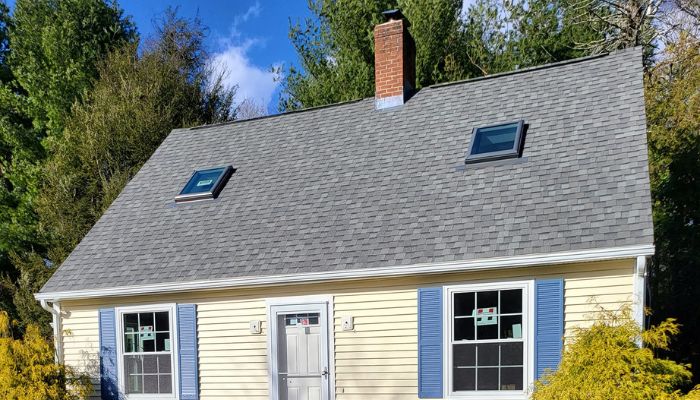
Your roof is one of the most critical components of your home, protecting you and your family from Connecticut’s diverse and often harsh weather conditions.
From heavy snowfalls in winter to humid summers, roofs endure a lot in this region. But just how long does a roof last in CT?
The answer depends largely on the type of material and the care it receives.
Here’s a quick breakdown of average roof lifespans in Connecticut based on common materials:
- Shingle Roof: 15–30 years
- Metal Roof (e.g., steel, tin): 40–70 years
- Slate Roof: 75–100+ years
- Tile Roof: 50–100 years
- Thatched Roof: 25–40 years
Each material offers unique benefits, and its longevity depends on proper installation, maintenance, and environmental factors.
Read on to learn more about what influences roof lifespan and how you can maximize the life of your roof in Connecticut.
Factors Influencing Roof Lifespan in Connecticut
The lifespan of a roof in Connecticut depends on numerous factors, from the materials used to the care it receives. Understanding these influences can help homeowners make informed decisions to extend their roof’s longevity.
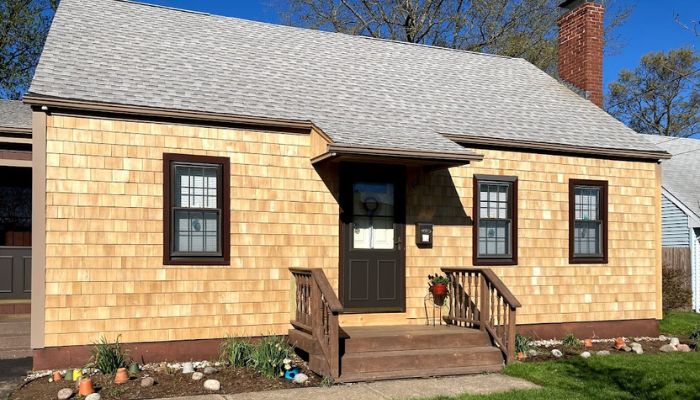
Material Type
The material of your roof plays a critical role in determining its durability and performance over time. Premium options like slate or tile offer unmatched longevity, often exceeding 75 years, while asphalt shingles provide a more cost-effective solution with a lifespan of 20–30 years. Materials such as metal excel in weather resistance, and thatched roofs add charm with moderate durability. Choosing the ideal material depends on your home’s style, financial considerations, and willingness to maintain it properly.
Climate and Weather Conditions in CT
Connecticut’s climate presents unique challenges for roofs. Heavy snowfalls in winter can lead to ice dams, placing strain on the roof’s structure. In summer, high humidity fosters mold and rot, especially in wood-based materials. Moreover, storms with strong winds can loosen shingles, while the state’s notorious freeze-thaw cycles cause cracking in some materials. How long does a roof last in CT depends greatly on how well it is weatherproofed and maintained through regular inspections to mitigate these environmental stressors.
Maintenance Frequency
How often you inspect and maintain your roof greatly influences its lifespan. Routine inspections help homeowners catch and resolve small issues before they develop into major problems. Cleaning gutters, removing moss, and replacing damaged shingles are simple yet crucial tasks. In Connecticut, where weather conditions can change rapidly, biannual maintenance—once in the spring and again in the fall—is highly recommended. Consistent care not only extends the life of the roof but also saves significant costs in the long run.
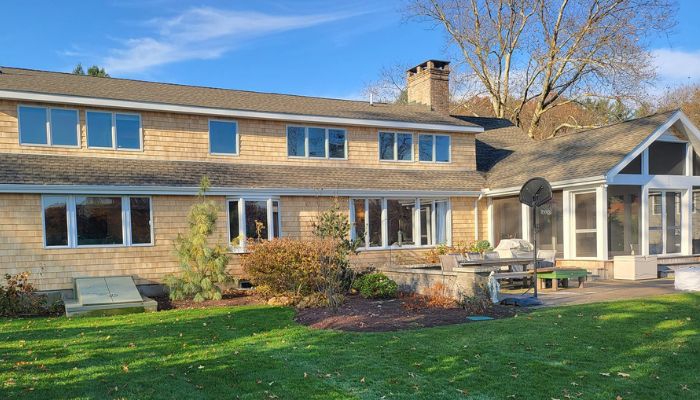
Roof Design and Complexity
The complexity of a roof’s design impacts both its durability and maintenance needs. Simple roofs with steep slopes efficiently shed water and snow, reducing the risk of leaks. In contrast, complex designs—featuring valleys, dormers, or skylights—create areas where water can pool, requiring extra care. Flat roofs, popular in modern designs, need regular cleaning and sealing to prevent water damage. When considering a roof replacement, opting for a design that balances functionality with aesthetics can reduce future maintenance demands.
Installation Quality
Even the most durable roofing materials can fail prematurely if the installation is subpar. Poorly installed flashing, uneven shingles, or gaps in seals can compromise the roof’s structural integrity and make it more vulnerable to Connecticut’s challenging weather. Hiring licensed professionals with experience in local conditions ensures that the roof is installed correctly, providing a solid foundation for years of reliable performance.
Age of the Roof
Over time, all roofing materials naturally degrade. Asphalt shingles, for instance, begin to lose their protective granules as they age, reducing their ability to resist water. Metal roofs may develop corrosion, while slate and tile can crack or shift. Understanding your roof’s current age is essential to determining how long a roof lasts in CT, helping homeowners anticipate when repairs or a replacement might be necessary, and avoiding unexpected failures.
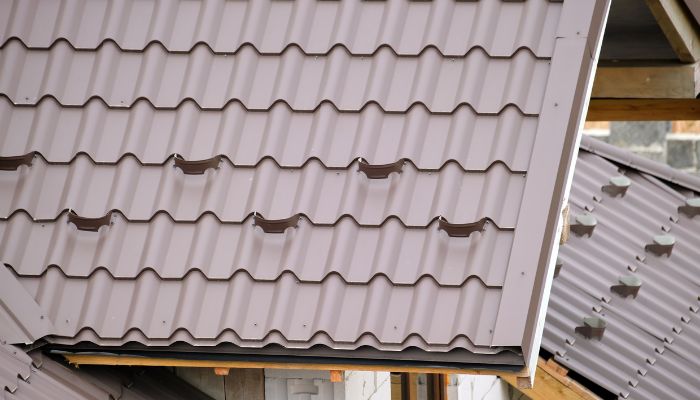
Roof Pitch and Slope
A steeply pitched roof naturally sheds water and snow more effectively than a flat or low-sloped roof. In Connecticut, where heavy snowfalls are common, this feature reduces the risk of water pooling and subsequent leaks. However, flat or low-sloped roofs can be maintained effectively with regular cleaning and inspections to ensure proper drainage and prevent structural issues.
Ventilation and Insulation
Proper ventilation and insulation are critical for a roof’s longevity. Without adequate ventilation, heat can build up in the attic, causing materials to warp. Similarly, poor insulation allows moisture to accumulate, leading to mold growth and weakened structures. In Connecticut, where both cold winters and warm summers are common, ensuring a well-ventilated and insulated roof helps maintain its durability and improves energy efficiency.
Exposure to Environmental Pollutants
Homes near industrial areas or highways face additional challenges from environmental pollutants. Acid rain, airborne chemicals, and soot can deteriorate roofing materials faster than usual. These pollutants also stain and degrade surfaces, impacting both aesthetic appeal and functionality. Applying protective coatings and scheduling periodic cleanings can help counteract these effects.
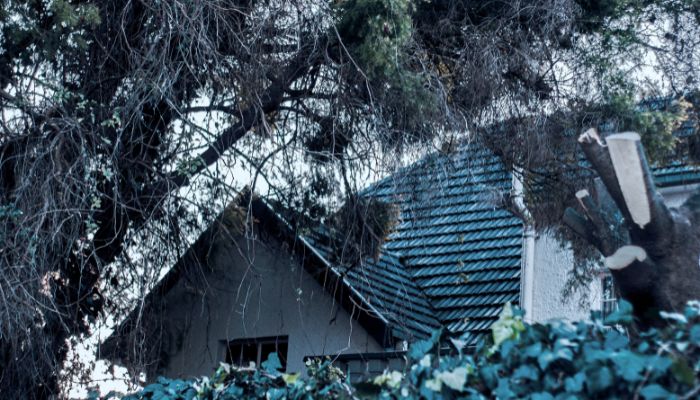
Tree Coverage and Debris Accumulation
While tree coverage can provide shade and enhance curb appeal, overhanging branches pose risks to your roof. Falling branches can damage shingles, while leaves and debris clog gutters, leading to water retention and mold growth. Regularly trimming branches and cleaning gutters is crucial to maintaining how long a roof lasts in CT, ensuring it remains in optimal condition. Don’t wait—schedule a free roof inspection today to prevent minor issues from becoming costly repairs!
Thinking About a New Roof or Repair?
Get a Free Roofing Quote
K.P. LaMarco Construction offers expert roofing solutions, from repairs to full replacements, using high-quality materials and skilled craftsmanship to protect and enhance your home.
Signs It’s Time to Replace Your Roof
Recognizing when your roof needs replacement is essential to avoid costly damage to your home. While some issues can be repaired, others signal that it’s time for a complete replacement. Below are the key signs to look for:
Visual Cues
Your roof’s exterior often provides the first warning signs of trouble. Cracked or curling shingles are a common indication that the roof’s protective layer is failing. Additionally, moss or algae growth on shingles may trap moisture, accelerating deterioration.
Another critical visual cue is a sagging roofline, which suggests structural issues, such as weakened rafters or a compromised foundation. Pay attention to missing shingles or visible wear on flashing around chimneys and vents, as these can allow water to penetrate the roof.
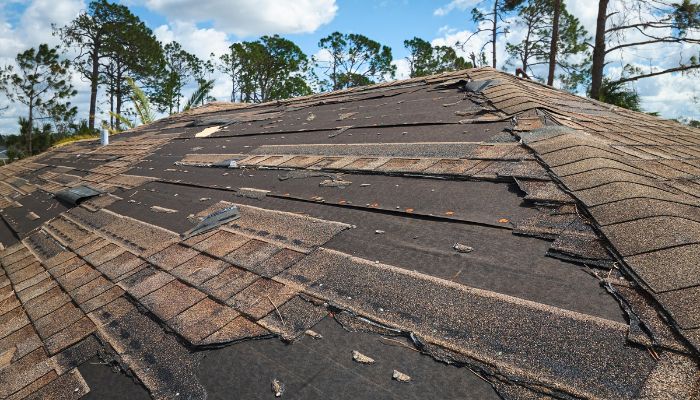
Structural Signs
Structural damage becomes apparent when issues with your roof start affecting the interior of your home. Leaks or water stains on ceilings and walls are clear signs of roof failure. If you notice drafts or uneven temperatures, it could indicate damaged underlayment or insufficient insulation.
A significant warning sign is the presence of rotting wood in the attic or visible damage to the roof deck, which compromises the roof’s overall stability and safety. These issues often raise concerns about how long a roof lasts in CT, emphasizing the need for timely inspections and repairs.
Impact of Delayed Replacement
Delaying roof replacement often leads to increased repair costs. For example, leaks that aren’t addressed promptly can result in mold growth, damaged insulation, and structural weakening. The longer these issues persist, the more expensive and invasive the repairs become.
Additionally, an aging or damaged roof poses safety risks, especially during severe weather. Heavy snow, strong winds, or storms can cause further deterioration, increasing the risk of collapse or significant interior damage. Proactively replacing your roof when these signs appear prevents these risks and saves money in the long run.
Read More: Metal Roof vs Asphalt Shingles – Which Should You Choose?
Tips for Extending Roof Lifespan
A well-maintained roof can significantly outlast its expected lifespan, saving you money and protecting your home from costly damage. By adopting these proactive strategies, you can ensure your roof remains in excellent condition for years to come.
Regular Inspections
Seasonal roof inspections are a critical first step in extending your roof’s lifespan. Connecticut’s varying weather patterns—snow in winter, rain in spring, and storms in summer—can take a toll on your roof. Schedule biannual check-ups (spring and fall) to identify and address issues like loose shingles, damaged flashing, or clogged gutters. Early detection of minor problems prevents them from becoming costly repairs.
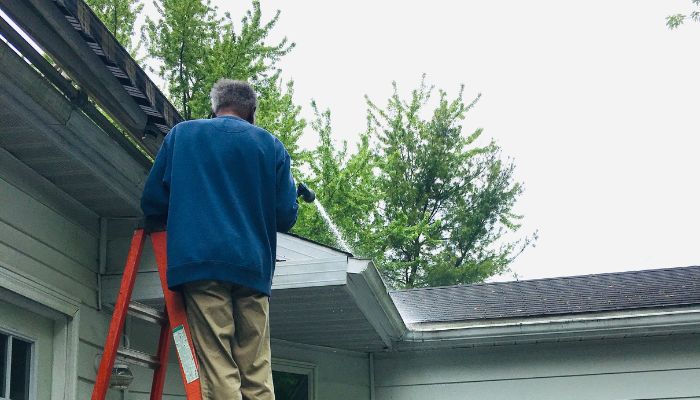
Routine Maintenance
Simple maintenance tasks go a long way in preserving your roof’s durability and extending how long a roof lasts in CT. Cleaning gutters ensures proper water flow, preventing pooling and potential leaks. Removing debris like leaves and branches reduces the risk of moisture buildup, which can lead to mold or rot. Addressing small issues—such as replacing missing shingles or sealing minor cracks—helps protect your roof from further wear and tear.
Professional Roof Services
Although DIY maintenance can be beneficial, some tasks are better handled by professionals.. Licensed contractors have the tools and expertise to perform detailed inspections, repair damage, and apply protective coatings. They can also ensure your roof meets building codes and safety standards, particularly in areas like Connecticut, where extreme weather demands extra care. Hiring trusted professionals ensures long-term durability and peace of mind.
Take the First Step Today
Protect your home by giving your roof the care it deserves. Whether you need a seasonal inspection or expert repairs, the professionals at K.P. LaMarco Construction are here to help. Contact us today to schedule a consultation and keep your roof in top condition for years to come.
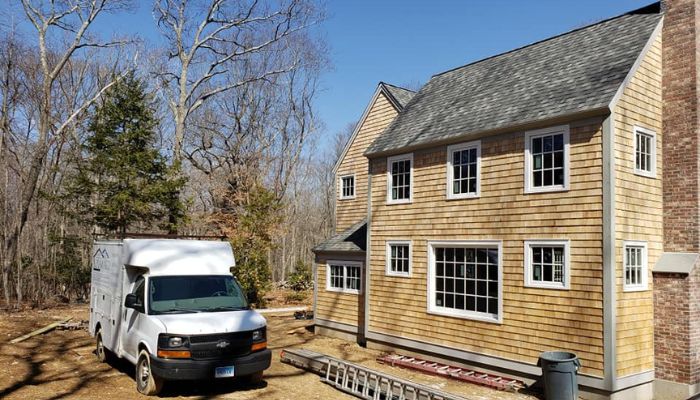
FAQs About Roof Lifespan in CT
When it comes to your roof’s longevity, many questions arise. Below are some of the most commonly asked questions about roof lifespan in Connecticut, along with clear and concise answers to help you make informed decisions.
You should inspect your roof at least twice a year—once in the spring and again in the fall. Additionally, check your roof after severe weather events such as heavy snowstorms, high winds, or hail. Regular inspections help catch small problems, like loose shingles or damaged flashing, before they become costly repairs.
The average cost to replace a roof in Connecticut ranges from $8,000 to $15,000, depending on factors like roof size, material type, and labor costs. High-end materials such as slate or tile can increase the price, while asphalt shingles remain a more affordable option. For an accurate estimate, it’s best to schedule a consultation with a roofing professional.
Yes, certain materials can last 70 years or more with proper care. Slate, tile, and high-quality metal roofs are known for their longevity, often exceeding this timeframe. Routine maintenance and professional inspections are key to achieving such a long lifespan, especially in Connecticut’s variable climate.
For Connecticut’s mix of snow, rain, and humidity, the most durable roofing materials include:
– Slate: Resistant to weather and extremely long-lasting.
– Metal: Handles snow and ice well, withstanding corrosion.
– Tile: Frost-resistant varieties work particularly well.
These materials are excellent for enduring the state’s challenging climate.
Snow and ice can significantly impact roof lifespan by adding weight and causing structural stress. Ice dams, which form when snow melts and refreezes at the roof’s edge, can lead to leaks and damage to shingles and underlayment. Regular maintenance, such as clearing snow and ensuring proper attic ventilation, helps mitigate these risks. Regularly trimming branches and cleaning gutters is crucial to maintaining how long a roof lasts in CT. Protect your investment—contact K.P. LaMarco Construction to schedule a professional roof inspection.
The frequency of roof replacement depends on the material:
– Asphalt shingles: Every 15–30 years.
– Metal roofs: Every 40–70 years.
– Slate and tile roofs: Often last 75–100+ years.
It’s important to replace a roof when signs of advanced wear appear, such as widespread leaks, sagging, or severe shingle damage.
If you have more questions about your roof’s lifespan or need a professional inspection, K.P. LaMarco Construction is here to help. Contact us today for expert advice and services tailored to Connecticut’s unique climate!
If you have more questions about your roof’s lifespan or need a professional inspection, K.P. LaMarco Construction is here to help. Contact us today for expert advice and services tailored to Connecticut’s unique climate!
Thinking About a New Roof or Repair?
Get a Free Roofing Quote
K.P. LaMarco Construction offers expert roofing solutions, from repairs to full replacements, using high-quality materials and skilled craftsmanship to protect and enhance your home.
Conclusion
Understanding how long a roof lasts in CT is essential to protecting your home and avoiding costly repairs. Regular maintenance and timely replacements ensure your roof can endure Connecticut’s challenging weather. Don’t wait—schedule your free roof inspection with K.P. LaMarco Construction today to keep your home safe and your roof in top condition!







